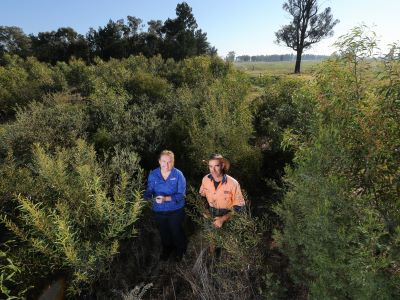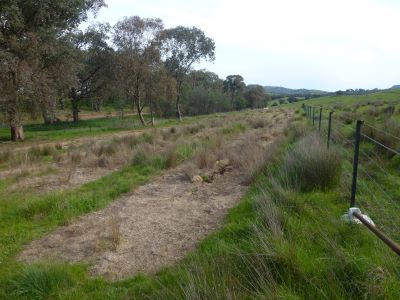Thinking of planting or seeding native vegetation? Start planning now.
NRM NEWS – NOVEMBER 2020 – TERRESTRIAL SYSTEMS
By Shanna Rogers
Senior Land Services Officer P: 02 6051 2241 | M: 0457 733 261 | E: shanna.rogers@lls.nsw.gov.au

Site preparation is critical to the success of native vegetation restoration projects.
Many people wait for a good rainfall season to commit to planting or direct seeding. However, this often leaves little time for adequate site preparation, which impacts on the germination success of direct seeding and the survival rate and vigour of planted seedlings.
To ensure your direct seeding or planting has the best possible start, follow the recommended site preparation activities in the seasonal guide below.
REVEGETATION CALENDAR GUIDE
Summer to early autumn of the year you plan to plant or seed native vegetation:
- Order plants or seeds as soon as possible, ideally before Christmas.
- Select species local to your area and landscape/soil conditions. Local Land Services and Landcare can assist you with species selection or refer to the South-West Slopes Revegetation Guide or Native Vegetation Guide for the Riverina.
- Rip before the autumn break if you are planting (you do not need to rip for direct seeding), while the ground is hard and dry to get deep shattering of the soil.
- We recommend you do a 'Dial Before You Dig' search before any ripping occurs to obtain information on underground cable or pipe networks in the area.
- Space rip lines at least 4 metres apart.
- Rip to a depth of at least 40 cm if possible.
- When ripping sloping terrain, the rip line should run along the contour (not down the slope).
- Avoid ripping under the canopy of existing trees.
- Control exotic perennial plants if they are actively growing. Phalaris, cocksfoot and lucerne can be challenging to kill and will out-compete native vegetation seedlings.
Mid-autumn to early winter (depending on when you wish to plant or seed):
- Control pest herbivores (rabbits, hares, deer, etc.)
- Ensure pest control methods chosen do not irreparably damage existing native plants, native animal habitat or culturally important sites. Your local Murray Local Land
Services Biosecurity Officer/s can provide advice on the control methods suitable for your situation and site. - Control weeds when they are actively growing (~1 month after the autumn break) in a 1.5 m band over the rip lines or in a 1.5 m band over the planned direct seeding lines with a knockdown herbicide. Blanket spraying of sites is not recommended. If there is a lot of vegetation cover crash grazing of the site or slashing of the rip/seeding line is recommended before weed control.
- Control exotic perennial plants again if needed.
Mid-winter to early spring:
- Control pest herbivores (rabbits, hares, deer, etc.)
- Ensure the site is fenced out and stock-proof before planting/seeding
- Control weeds if needed with a knockdown herbicide.
- Plant or seed into weed-free rip/spray lines.
After planting/direct seeding:
- Monitor for pest animal (rabbits, hares, deer, grasshoppers, etc.) or stock damage
- Stock must be excluded from the site for about 3 – 5 years to enable seedling establishment.
- Most planted sites, particularly in the central or western area of the region, will require watering/s over the first summer. Depending on the season and the site one water may be all that is needed, other seasons/sites may require up to five watering to get them through hot summers.
- For direct-seeded sites, monitor for red-legged earth mites before and after seeding. If you notice red-legged earth mite activity after seeding, you will need to spray an appropriate insecticide over the seeded lines.
The above guide is not in-depth and may not cover all planning, site preparation & ongoing management aspects of your proposed revegetation project.
More information can be found in the ‘Planting your patch guide’.
Please contact Murray Local Land Services or your local Landcare group to arrange a site visit and get specific site preparation and management advice for your potential revegetation project.
